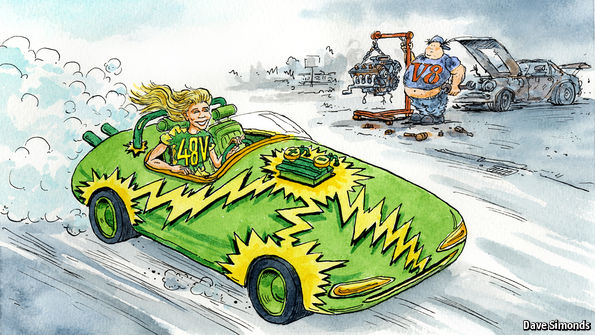At last, the 48 show

VOLTAGE is to electricity what pressure is to water: the more you have of it the more oomph you get. That is why electrical power lines work at high voltage. In the 1950s carmakers needed extra oomph of this sort to start the powerful high-compression engines then being introduced, so they increased the voltage of their vehicles’ electrical systems from six to 12. Now voltages are going up again—to 48.
One reason is that cars are packed with more and more components, demanding more and more electrical power. A modern vehicle may have as many as 150 electric motors. But there is a second reason for the increase, too. Extra voltage lets engineers design cars in novel ways that boost engine output and efficiency. This can be used to make hybrids on the cheap (some people call them “mild hybrids”). These employ a combination of electric motors and combustion engines to cut both fuel consumption and polluting emissions.
The first production car to use 48 volts is the SQ7, a new luxury sports-utility vehicle made by Audi, a German firm that is part of the Volkswagen Group. It is not a hybrid, but it employs an electrically driven 48-volt…Continue reading
Source: Economist




